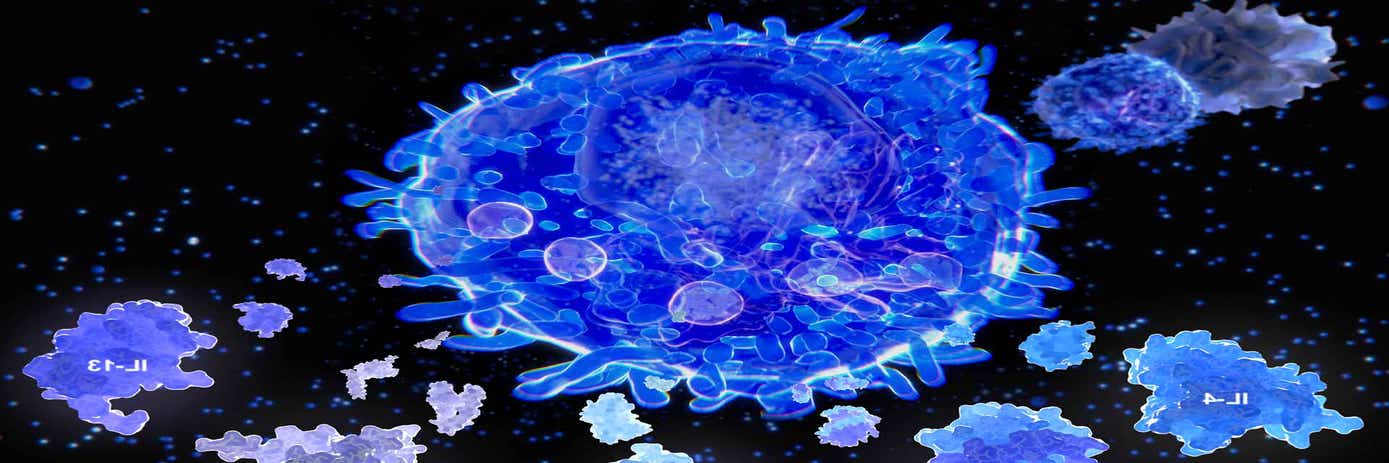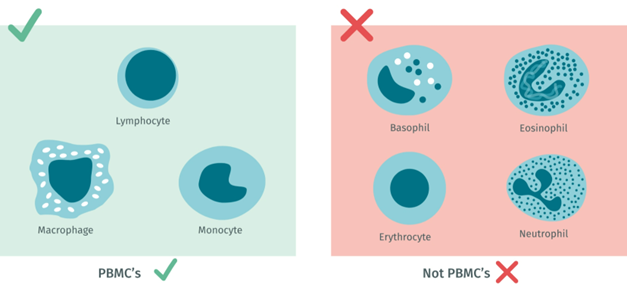
Are you working on PBMC from buffy coat or whole blood, but struggling with your PBMC isolation? You asked all your lab colleagues for advice, but you still experience platelet contamination or low yield?
Challenges like this in the first steps of a protocol can be very frustrating. But you can’t move forward, as good PBMC isolation is essential when you are trying to measure cytokine secretion!
To help you over the hurdle, we prepared a complete and easy protocol to help you to purify PBMC and set up your cytokine assay.
But first, what is PBMC?
Peripheral Blood Mononucleal Cells (PBMC) are blood cells with a single round nucleus. This includes T-cells, B-cells, monocytes, and macrophages, but excludes platelets and erythrocytes that do not have any nucleus, as well as granulocytes, which have a polynuclear nucleus (that is, a non-round nucleus).

PBMCs play an important role in innate and adaptive immunity. They synthetize cytokines, which are involved in immunology, cancerology, and many disorders.
How does PBMC isolation work?
By gradient! Blood cells have different size and weight, so centrifugation distributes cells according to their weight. Heavier cells sink towards the bottom and lighter cells rise towards the top.
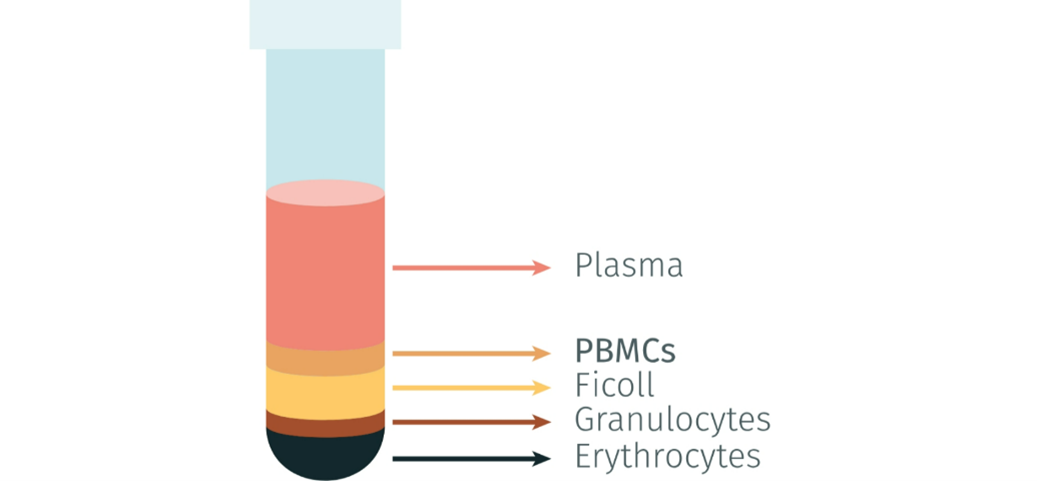
But wait! Simply centrifuging blood cells produces a pellet at the bottom of the tube! The trick is to use an ingredient to produce the separation gradient effect: Ficoll®.
The protocol is very easy. Add a volume of Ficoll to a tube, then add a volume of blood cells. Blood is lighter than Ficoll and therefore remains on top.
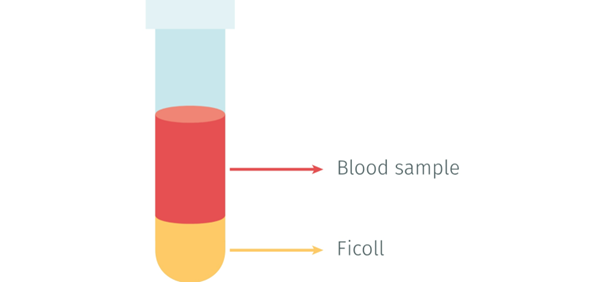
The magic happens after centrifugation. Red cells are found in the lower part. Above that is a layer of Ficoll, on which sits a clear layer of lighter cells such as thrombocytes. PBMC forms a thin orange interphase between Ficoll and thrombocytes.
Tip: centrifugation must be performed without braking. Otherwise, the separation of upper and lower parts will be disturbed.
Carefully pipet PBMC, transfer it to a new tube, and discard the supernatant centrifugation. After cell resuspension in medium, cytokine measurement can be performed directly or cells can be frozen.
Which method to choose?
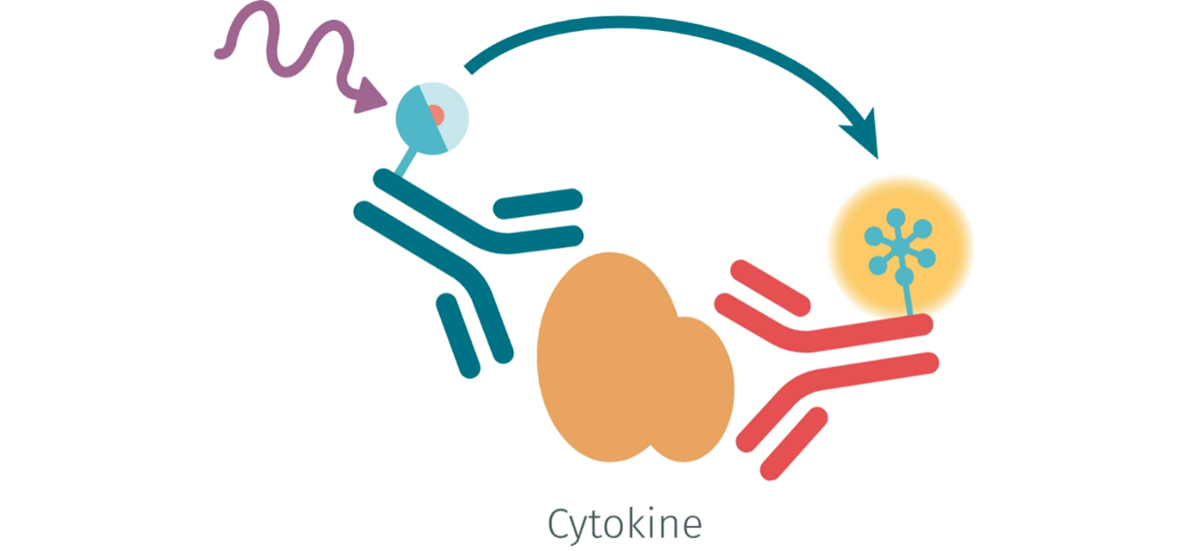
The method of choice is to use an HTRF™ assay.
HTRF is a reliable, fast, and easy assay that does not require washing and can be set up in just a few hours.
HTRF is based on the FRET method. The compound is detected by two antibodies linked to a donor and an acceptor fluorophore. A signal is emitted when the donor and acceptor are in close proximity. This provides accurate and sensitive measurement
How to carry out the experiment?
Dispense a volume of your cells onto a plate and use a compound for stimulation. Then, simply add HTRF reagents and measure the signal. That’s how easy it is to set up an HTRF assay. We provide many ready-to-use kits for your work on cytokine and immune checkpoints (PD1/PDL1, IL1, IFNɣ, TNFα, and more).
Equipped with this protocol, you are now ready to purify the PBMC and dose any cytokine you are working on reliably and reproducibly.
Discover a complete guideline for PBMC isolation and cytokine assays, complete with a method to optimize every step of your experiment!
For research use only. Not for use in diagnostic procedures.
The information provided above is solely for informational and research purposes only. Revvity assumes no liability or responsibility for any injuries, losses, or damages resulting from the use or misuse of the provided information, and Revvity assumes no liability for any outcomes resulting from the use or misuse of any recommendations. The information is provided on an "as is" basis without warranties of any kind. Users are responsible for determining the suitability of any recommendations for the user’s particular research. Any recommendations provided by Revvity should not be considered a substitute for a user’s own professional judgment.





























